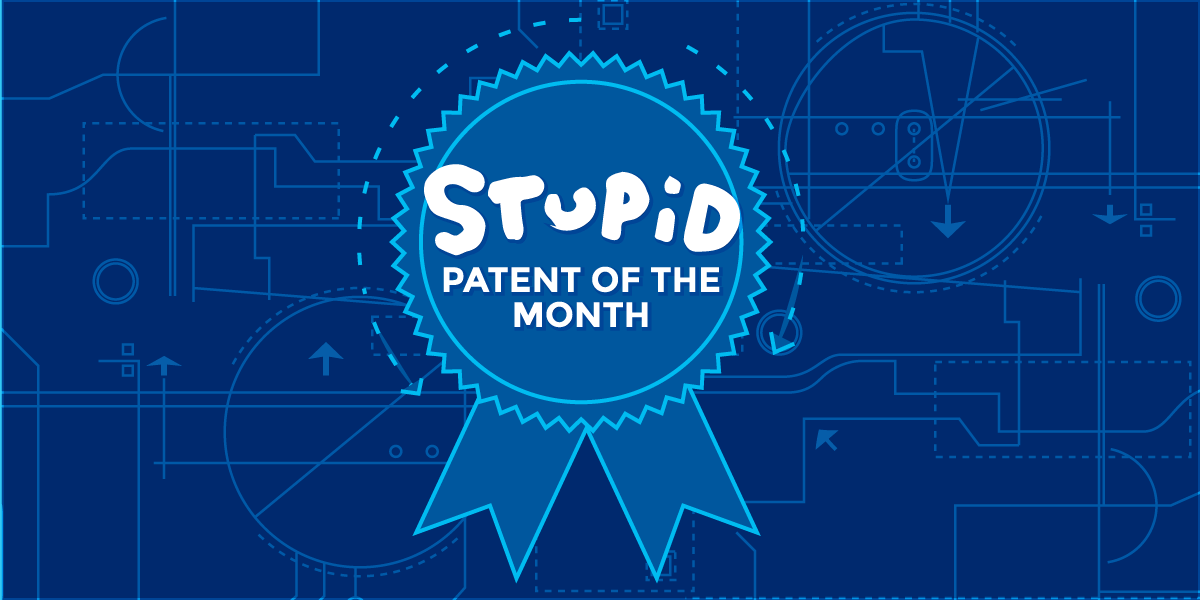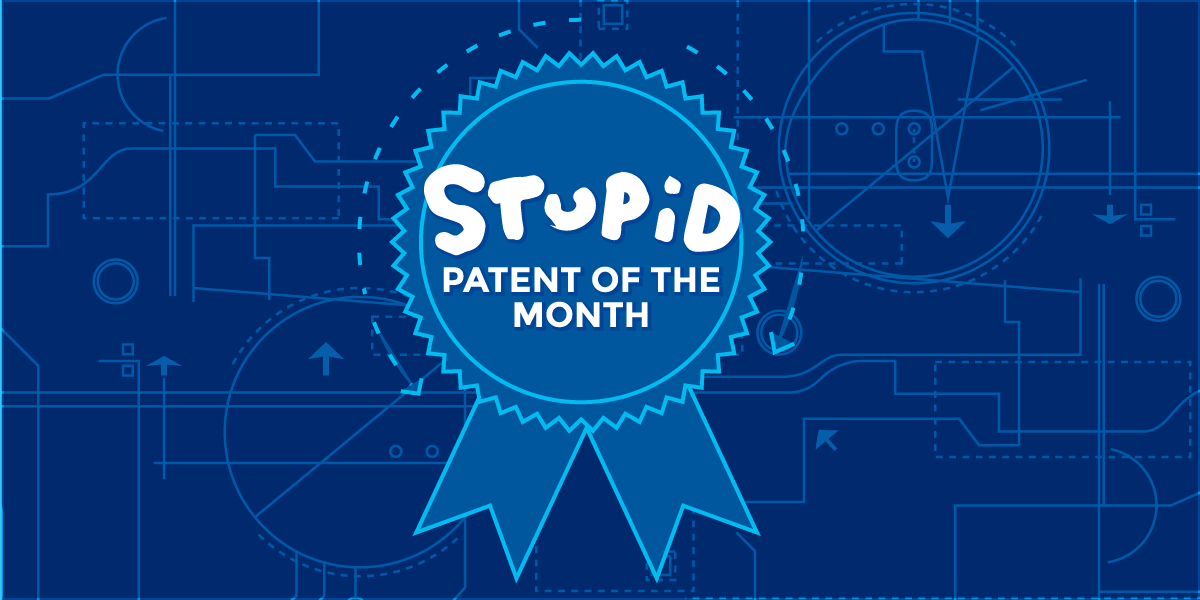For more than three years now, we’ve been highlighting weak patents in our Stupid Patent of the Month series. Often we highlight stupid patents that have recently been asserted, or ones that show how the U.S. patent system is broken. This month, we’re using a pretty silly patent in the U.S. to highlight that stupid U.S. patents may soon—depending on the outcome of a current Supreme Court case—effectively become stupid patents for the entire world.
Lenovo was granted U.S. Patent No. 9,875,007 [PDF] this week. The patent, entitled “Devices and Methods to Receive Input at a First Device and Present Output in Response on a Second Device Different from the First Device,” relates to presenting materials on different screens.
The first claim of the patent is relatively easy to read and understandable, for a patent. What Lenovo claims is:
A first device, comprising:
at least one processor;
storage accessible to the at least one processor and bearing instructions executable by the at least one processor to:
receive user input to present an output on a display; and
determine a second device different from the first device on which to present the output based at least in part on identification by the first device of the second device as having a relatively larger display on which to present the output than the first device.
This claim describes a distinction a child may make, in asking a parent to put something up on the “big screen.” It covers a generic computing device, programmed to make a comparison between the size of display screens, and choose one of the screens based on that comparison, something that any person would know how to do, and any programmer would know how to implement. A review of what happened [PDF] at the Patent Office shows the fine (and trivial) distinctions Lenovo made over what was known in order to claim there was an invention. Lenovo argued that although previous technologies allowed for displaying material on second devices with larger screens, those technologies didn’t do it by identifying second devices by determining the size of the screens. Even if what Lenovo claims is true (though we have doubts that they were the first to do this), we’re not sure why as a public policy matter Lenovo should be entitled to a monopoly on this “invention.” It seems more the product of basic skill and design rather than anything inventive. Generally, people are not supposed to get patents on things that are obvious.
It’s quite possible that Lenovo will never assert this patent against anyone, and it will become like many patents, just a piece of paper on a wall. But what if Lenovo decided to assert this patent?
We’re highlighting this patent in order to bring attention to the fact that a U.S. Supreme Court case being decided this term could make this patent not just a stupid U.S. patent, but effectively a stupid worldwide patent.
Generally, countries’ patent laws only have domestic effect. If you want to have patent protection in the U.S., you need to file for a U.S. patent and show your application complies with U.S. patent law. If you want protection in India, you also need to file in India and show it complies with Indian patent law. There are differences between the patent laws of various countries; some provide more protection, some provide less. That patent laws differ in different countries is generally considered a feature, not a bug.
There’s an important exception in the U.S., however, to this general idea that patent rights are limited to a particular country. Under the Patent Act, specifically 35 U.S.C. § 271(f), if combining certain parts would constitute patent infringement in the U.S., then someone who knowingly supplies those same parts with the intention that they be combined abroad is also liable for infringement. Basically, you can’t make parts A and B in the U.S., ship them abroad and tell people to combine them into AB, if you know that you’d infringe a patent in the U.S. if you just combined them into AB in the U.S. and then shipped them abroad. The point of this narrow rule is to prevent people from offshoring the final step of a process, where they’re purposefully doing so in order to evade U.S. patent rights.
There is a new case currently pending at the U.S. Supreme Court called WesternGeco v. Ion Geophysical that relates to this fairly narrow law, § 271(f). The question the Supreme Court has been asked is: if someone is liable for patent infringement under § 271(f), can the patent owner recover lost profits relating to the combinations that were made abroad? If confined to § 271(f), the result (whichever way the court could rule) would be a fairly narrow decision. Most cases asserting patent infringement are not brought under that basis, and the circumstances that would cause infringement under that section don’t arise very often.
But at an earlier stage of the case, the Solicitor General, whose opinion is often given great weight by the Supreme Court, advanced [PDF] a startling idea: patent owners should be able to collect damages for any act that was a foreseeable result of the U.S. based infringement in every case of patent infringement, not just those brought under § 271(f), even if the act occurred completely abroad.
This would result in a dramatic expansion of the scope of U.S. patent remedies, making them, effectively, act the same as worldwide patent rights for any product that has a global market.
An example is useful here. Suppose a display systems designer BobCo designed a system that it sold to Lenovo’s competitor CompCo in China to include in CompCo’s goods built in China. CompCo sells its goods globally, and some of the goods end up in the U.S., infringing on Lenovo’s patent in the United States. Under the Solicitor General’s view, Lenovo should be able to sue BobCo for violating the U.S. patent, and recover all the profits that BobCo made from CompCo for all the goods sold worldwide—regardless of whether they ever ended up in the U.S. Lenovo could get this reward despite the fact that all of BobCo’s acts (other than importing a few of the products) occurred abroad. Even though technically only the products that entered the U.S. infringed the U.S. patent, Lenovo’s remedy for violation of those rights would include recovery for all products worldwide.
This example is essentially the facts of a case called Power Integrations, where the U.S. Court of Appeals for the Federal Circuit (correctly, in our view), rejected such a broad scope of remedies, stating that U.S. patent laws “do not [] provide compensation for a defendant’s foreign exploitation of a patented invention, which is not an infringement at all.” The Solicitor General is now challenging this rule.
It’s not hard to see how the Solicitor General’s rule could interfere with rights held by others abroad—including the rights of the public—and would mean that U.S. patent rights would be effectively exported to other countries. Innovations that are in the public domain in China or Germany, for example, could all of a sudden become more expensive because a U.S. patent rights holder gets to impose a cost on goods in those countries because some end up in the U.S. For example, even though Lenovo has applied for a patent in China that is related to the U.S. patent, no patent has (yet) issued. Lenovo’s attempt to get a patent in Germany has also not yet been successful. But under the Solicitor General’s theory, if sales in Germany or China were a foreseeable result of infringing sales in the U.S., Lenovo could impose costs in those countries regardless of whether they actually were entitled to a patent in that jurisdiction. We’re also concerned that such a rule would lead to a race to the bottom: if U.S. courts impose a worldwide patent tax to benefit U.S. patent holders, other countries may try to do the same as well. This could lead to companies being subject to multiple claims of infringement with multiple payments of worldwide damages, again increasing costs to consumers.
We’ve now spent years highlighting some pretty silly U.S. patents. We hope the Supreme Court rejects the Solicitor General’s desire to expand the scope of U.S. patent remedies, and refuses to turn stupid U.S. patents into, effectively, stupid worldwide patents.





